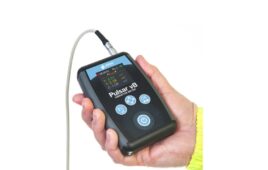Released earlier this year, the National COVID-19 Preparedness Plan addresses several areas to safely get Americans back to their more normal routines. One of the key points of the Preparedness Plan is the Clean Air in Buildings Challenge (CAiBC). The CAiBC calls on all building owners and operators, schools, colleges and universities, and organizations of all kinds to adopt key strategies to improve ventilation in buildings and implement cost-effective ventilation and air filtration improvements in buildings. These actions will improve indoor air quality (IAQ) in buildings and help reduce the spread of COVID-19. The Clean Air in Buildings Challenge specifically identifies implementing CO2 monitors as needed as part of the action plan for IAQ.
“As part of their response to the Clean Air in Buildings Challenge, TandD has had several customers and potential customers investigate and ultimately implement CO2 datalogging in their implementation plan,” says Steve Knuth, President, TandD. In most instances, Knuth recommends the TandD TR76 and RTR576 CO2 dataloggers, which offer remote monitoring and automated data collection.
Designed to measure and record CO2 concentration, the three-channel RTR-576 data logger also measures temperature and humidity. To provide instant on-site notification and signaling when ventilation is needed, external devices such as buzzers and lights can be connected to the contact output terminal. A couple of recommendations from the Clean Air in Buildings Challenge can specifically be addressed with CO2 dataloggers.
For example, the CaiBC states, “Consider running the HVAC system to refresh air before arrival and/or remove remaining particles at the end of the day (e.g., 1-2 hours before/after the building is occupied), as needed.” Dataloggers can confirm when running an HVAC is necessary, as well as letting the building operator know how long it must remain on by monitoring CO2 parts per million (ppm). For reference, the American Society of Heating and Air-Conditioning Engineers (ASHRAE) recommends that levels stay below 1,000 ppm indoors.
Communication is an important CaiBC aspect. It states, “Communicate to affected people (e.g., building occupants, workers, students, teachers, and parents) about how the action steps you are taking will improve indoor air quality and reduce disease transmission in your building.” If CO2 datalogging is added to a building, it takes the guesswork out of monitoring CO2 by offering hard data, provides value to stakeholders and can be a significant part of the communication effort
Filed Under: Sensor Tips





